Overview:
The surging Covid cases in China and the protests in several cities seemed to set the tone for today’s session. Equities are lower. China, Hong Kong, Taiwan, and South Korea were marked down the most. Of the large bourses, only India escaped unscathed. Europe’s Stoxx 600 is off more than 0.8% and US futures are poised to gap lower. Bond markets are quieter. The 10-year US Treasury yield is off a little more than one basis point to around 3.66%. European benchmarks are mostly firmer, and peripheral spreads are a few basis points wider. The US dollar began off stronger, but now only the dollar bloc among the majors is weaker. The euro rose through the recent high to edge closer to $1.05. Among emerging market currencies, central European currencies are leading. China, Taiwan, and South Korea, join Russia with the largest losses. Gold is trading near a six-day high and reached almost $1764. Demand concerns and Europe’s inability to agree so far to a price cap for Russian oil have pushed January WTI below $75 a barrel for the first time since mid-January. February Brent is near $81. It had briefly traded below $80 in late September. US natgas is off 5.75% after falling almost 4% before the weekend. Europe’s natgas benchmark is off 5.2% after rallying more than 25% over the past two weeks. Iron ore fell almost 1% today. It offset last week’s 0.55% advance, which was the fourth consecutive weekly rally, during which time it had surged by nearly a quarter. March copper is off about 0.5% to give back a little more than it had gained before the weekend. Lastly, March wheat has fallen in seven of the past eight weeks and starts this week with a loss of nearly 1%.
Asia Pacific
It is difficult to know what to make of the protests in China. The deadly fire in Urumqi last week, blamed on zealous local authorities, seems to have been the spark. The kindling is the rising Covid cases in China, the slowing economy, popular discontent, and pent-up frustrations Demonstrations took place in several cities, but might not be a "nationwide movement" as some in the media claim. Calls for Xi to step down and criticism of censorship suggest underlying frustrations. Paradoxically, the more profound the challenge (which is the hope of many), the more possible repression. At the same time, Beijing may align with the people against the overzealous. China needs to buy some time if it is going to make a significant change in its Covid policy stance. It needs to construct emergency medical facilities, boost the vaccination rate, and import mRNA vaccines, which Beijing already accepted making one available to foreigners. We are skeptical that the property measures will be sufficient and see the surge in Covid making us even more suspicious. Similarly, last week's 25 bp cut in reserve requires (worth about CNY500 bln or about $70 bln) is going to be lost amid the continued surge in Covid cases.
In Japan, the unexpected contraction in Q3 GDP was followed by a surprisingly weak preliminary PMI. Weakness in manufacturing (two-year low) and falling new orders saw the composite drop below the 50 boom/bust level to 48.9 from 51.8. Despite the acceleration of Tokyo's November CPI, the subdued wage growth and weakness of the economy underscore the importance of accommodative fiscal policy and the extraordinary monetary policy. The key to the exchange rate still seems like US Treasuries. As we have noted, the rolling 30-day correlation of changes in the exchange rate and changes in the 10-year US Treasury yield is at its highest this year (~0.71).
Australia reported that October retail sales fell by 0.2%. The median forecast in Bloomberg' survey looked for a 0.5% increase and no forecast anticipated a decline, the first of the year. The decline was seen in all sectors but food retailing. Still, in absolute terms, the October sales were the second highest on record. Still, it seems clear that the Australian economy is slowing, and the preliminary November PMI stood at 47.7, the second consecutive month below the 50 boom/bust level and the lowest since January. The first thing Wednesday, Australia reports its new monthly CPI series for October. New cyclical highs are expected (7.6% at the headline level, up from 7.3%, and 5.7% trimmed mean vs. 5.4% in September). The futures market has about 2/3 of a chance of a 25 bp hike on December 6.
The yen strengthened to its best level since late August today. The dollar has stalled slightly above JPY139.50 ahead of the weekend and was sold below JPY139 in Asia. It did not find a bid until JPY137.50 in the European morning. It looks like the move may be exhausted but re-establishing a foothold above JPY138.50 may be necessary. Meanwhile, three-month implied volatility peaked last month near 14.8% had fallen to 11% but is poking above 13% today. Chinese developments are taking a toll on the dollar-bloc currencies and the Australian dollar is the weakest. After settling near $0.6750, the Aussie was sold to almost $0.6665 today in the Asia. It recovered to reached $0.6715 in the European morning before news sellers emerged. There are options for nearly A$770 mln at $0.6700 that may have added to the selling pressure when the Australian dollar fell through it. The inability to take out $0.6800 last week leaves a potential double top, with a neckline around $0.6600, where the 20-day moving average is found. The dollar gapped higher against the Chinese yuan and rose to CNY7.24 before reversing and falling below CNY7.20. The gap extends to the pre-weekend high slightly above CNY7.1800. The PBOC set the dollar's reference rate at CNY7.1617 compared with the median in Bloomberg's survey for CNY7.1715. The dollar reached almost CNH7.26 against the offshore yuan. It had settled near CNH7.1940 before the weekend. It is around CNH7.2130 in late in the European morning.
Europe
The cap on natural gas prices announced last week would only be invoked in extreme circumstances, so extreme that the events earlier this year would not have triggered them. Europe could not agree on a meaningful price cap on Russia's oil, which will be banned in any event in Europe after December 5, with some latitude provided when the oil is loaded and unloaded. Poland and the Baltics led the charge for lower than $65 barrel, while others, including Greece, did not want it to be lower than $70. Part of the challenge is that some Russian oil, like the Urals benchmark, was selling for $52 a barrel last week, according to reports. Talks resume today.
Prime Minister Sunak won not one but two leaderships contests in Parliament this year. Yet he faces the same problem as his recent predecessors, the Conservative are deeply and numerously divided. Growth and disparity issues could be addressed by construction of new homes, but the government's bill was stalled in Parliament with many Tories defected. Immigration by some Tories to minimize wage competition, but reduced immigration was supposed to have been made possible by Brexit in the first place. Last week, Johnson and Truss joined others in Parliament to overturn the existing ban on land-based wind turbines.
Money supply, M3 slowed dramatically in October to 5.1% from 6.3%, and much more than expected (6.1% median forecast in Bloomberg's survey). It is the slowest annual growth rate since the end of 2019. Loans to businesses was steady (8.9%), while lending to households slowed to 4.2% from 4.4%. The highlight of the week is preliminary November CPI on Wednesday. The headline rate is seen slowing slightly to 10.4% from 10.6%, while the core is expected to be steady at 5%. Meanwhile, the swaps market is nearly evenly divided over the outlook for the December 15 meeting between 50 bp and 75 bp.
As seen after the missile hit on Poland, the initial loss in the euro was snapped up, and it happened again. Chinese developments initially saw the euro fall half a cent from the close slightly below $1.04. It fell through the pre-weekend low to a three-day low (about $1.0340) and surged from around $1.0370 to $1.0480 in the European morning. Last week, it did not trade over $1.0450. The high, here in H2, was set on November 15 slightly shy of $1.0480. The impulsive nature of the rallies, while the downticks have been choppy is notable. To confirm an outside day, the euro needs to settle above Friday's high (about $1.0430). Sterling's price action is not quite as impressive. It also fell to a three-day low near $1.2025, and while it has recovered it has held below the pre-weekend high (about $1.2130). While the euro has traded on both sides of its 200-day moving average (about $1.0385) today and over the past two weeks, sterling has not. Its 200-day moving average is slightly above $1.2175.
America
The market and the media like drama and insist the FOMC minutes were dovish, or that there is a spilt between the hawks and doves. Pshaw. There seems to be a broad consensus favoring a downshift to 50 bp at next month's meeting. Remember this was what the median Fed dot in September suggested would be appropriate. The fact of the matter is that financial conditions have eased, and the drama provides a narrative. We suspect there will not be dissent if the Fed delivers a half-point hike in December. A half-point hike cannot be considered dovish or a key fissure at the FOMC. No Fed official has intimated they want to pause now or that the mission has been accomplished. Given the easing of financial conditions, Chair Powell will likely sound a hawkish note when he speaks Wednesday. Recall that market wanted to read the FOMC statement earlier this month and Powell corrected it. Redux?
The busy week features the US employment data being with the Dallas Fed manufacturing survey and speeches by the Fed's Williams and Bullard. Canada reports its Q3 current account balance. It is expected to have swung into deficit, which will likely offset most of the C$5.3 bln surplus seen in H1. Tomorrow Canada reports September and Q3 GDP. Growth is expected to have slowed to around 1.5% in Q3 from 3.3% in Q2. The Bank of Canada meets on December 7, and the swaps market has a little less than a 60% chance of a 50 bp hike discounted.
Separately, ahead of the weekend, Mexico reported Q3 GDP expanded by 0.9% and 4.3% year-over-year. We have drawn attention to worker remittances, which have more than offset the trade deficit. Looking closer at its trade, we note that exports in September for up a quarter year-over-year and around 80% are headed to the US. Vehicles and computer parts shipments each were about $4.7 bln. Mexico reports October's trade balance today. The trade balance often deteriorates in October (16 of the past 21 years) and this year is not expected to be an exception. The central bank of Mexico is widely expected to continue to match the FOMC, and this means 50 bp next month and 50 bp in the first part of next year. The peso's volatility has fallen, and this makes the carry-trade attractive. The 200-day moving average of the benchmark three-month implied volatility is a little above 12% and it is near 11.25% now. This is lower than the implied volatility of most G10 currencies, but the euro, Swiss franc, and Canadian dollar.
Brazil cannot get out of its own way. The new government has not eased investors' concerns about its fiscal intentions, and many fund managers appear overweight. Haddad, the former mayor of Sao Paulo, is seen as the likely finance minister, continued to press the case but seemed more flexible on tactics. Bolsonaro's effort to annul votes was rejected by the electoral court. It ruled Bolsonaro was acting in "bad faith" and fined the parties in his coalition BRL23 mln (~$4.3 mln).
The greenback found support in the last two sessions last week around CAD1.3320, a little below the (61.8%) retracement target of the run-up since the November 15 low near CAD1.3225. The initial risk-off reaction in the Asia Pacific time zone saw the US dollar jump to almost CAD1.3475. Subsequently, it has drifted lower and is near CAD1.3430 in the European morning. There may be scope toward CAD1.3380-CAD1.3400 in the North American morning. The dollar posted an outside down day against the Mexican peso before the weekend and set new lows for the week (~MXN19.3065). It remains pinned there today and has not been above MXN19.3650. On November 15, the greenback recorded its low since March 2020 near MXN19.25. Before Covid stuck, the dollar was trading below MXN19.00 in late 2019.







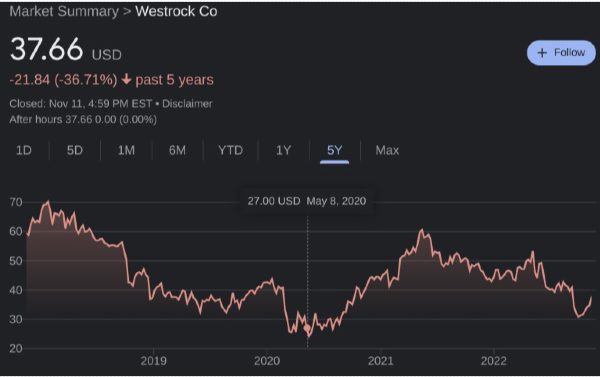

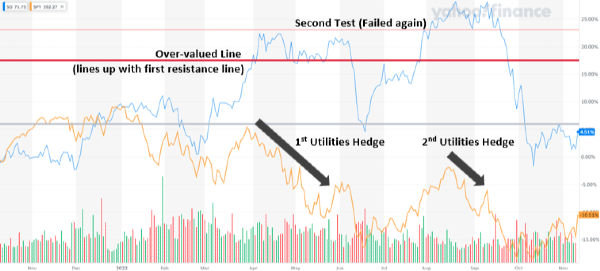


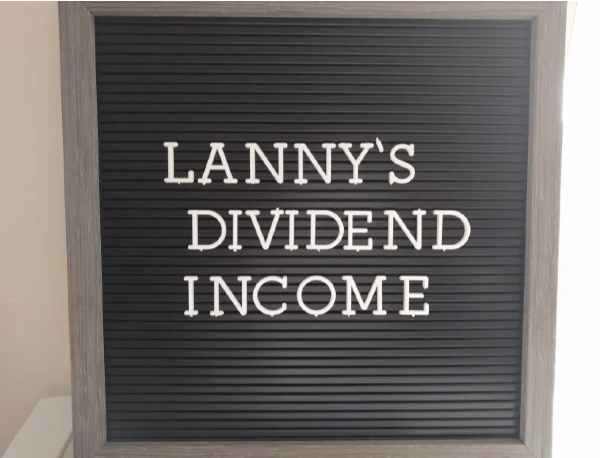
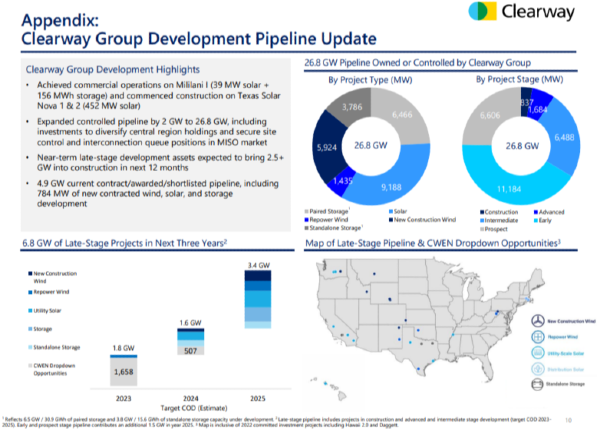
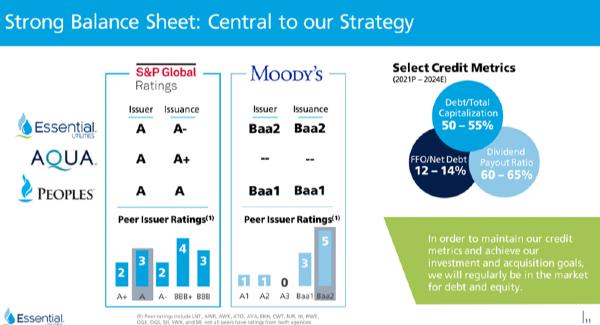




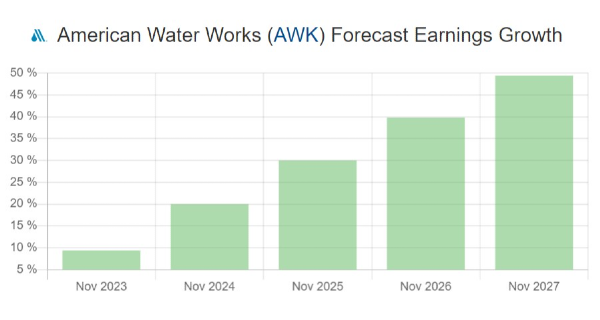








Overview:
The surging Covid cases in China and the protests in several cities seemed to set the tone for today’s session. Equities are lower. China, Hong Kong, Taiwan, and South Korea were marked down the most. Of the large bourses, only India escaped unscathed. Europe’s Stoxx 600 is off more than 0.8% and US futures are poised to gap lower. Bond markets are quieter. The 10-year US Treasury yield is off a little more than one basis point to around 3.66%. European benchmarks are mostly firmer, and peripheral spreads are a few basis points wider. The US dollar began off stronger, but now only the dollar bloc among the majors is weaker. The euro rose through the recent high to edge closer to $1.05. Among emerging market currencies, central European currencies are leading. China, Taiwan, and South Korea, join Russia with the largest losses. Gold is trading near a six-day high and reached almost $1764. Demand concerns and Europe’s inability to agree so far to a price cap for Russian oil have pushed January WTI below $75 a barrel for the first time since mid-January. February Brent is near $81. It had briefly traded below $80 in late September. US natgas is off 5.75% after falling almost 4% before the weekend. Europe’s natgas benchmark is off 5.2% after rallying more than 25% over the past two weeks. Iron ore fell almost 1% today. It offset last week’s 0.55% advance, which was the fourth consecutive weekly rally, during which time it had surged by nearly a quarter. March copper is off about 0.5% to give back a little more than it had gained before the weekend. Lastly, March wheat has fallen in seven of the past eight weeks and starts this week with a loss of nearly 1%.
Asia Pacific
It is difficult to know what to make of the protests in China. The deadly fire in Urumqi last week, blamed on zealous local authorities, seems to have been the spark. The kindling is the rising Covid cases in China, the slowing economy, popular discontent, and pent-up frustrations Demonstrations took place in several cities, but might not be a "nationwide movement" as some in the media claim. Calls for Xi to step down and criticism of censorship suggest underlying frustrations. Paradoxically, the more profound the challenge (which is the hope of many), the more possible repression. At the same time, Beijing may align with the people against the overzealous. China needs to buy some time if it is going to make a significant change in its Covid policy stance. It needs to construct emergency medical facilities, boost the vaccination rate, and import mRNA vaccines, which Beijing already accepted making one available to foreigners. We are skeptical that the property measures will be sufficient and see the surge in Covid making us even more suspicious. Similarly, last week's 25 bp cut in reserve requires (worth about CNY500 bln or about $70 bln) is going to be lost amid the continued surge in Covid cases.
In Japan, the unexpected contraction in Q3 GDP was followed by a surprisingly weak preliminary PMI. Weakness in manufacturing (two-year low) and falling new orders saw the composite drop below the 50 boom/bust level to 48.9 from 51.8. Despite the acceleration of Tokyo's November CPI, the subdued wage growth and weakness of the economy underscore the importance of accommodative fiscal policy and the extraordinary monetary policy. The key to the exchange rate still seems like US Treasuries. As we have noted, the rolling 30-day correlation of changes in the exchange rate and changes in the 10-year US Treasury yield is at its highest this year (~0.71).
Australia reported that October retail sales fell by 0.2%. The median forecast in Bloomberg' survey looked for a 0.5% increase and no forecast anticipated a decline, the first of the year. The decline was seen in all sectors but food retailing. Still, in absolute terms, the October sales were the second highest on record. Still, it seems clear that the Australian economy is slowing, and the preliminary November PMI stood at 47.7, the second consecutive month below the 50 boom/bust level and the lowest since January. The first thing Wednesday, Australia reports its new monthly CPI series for October. New cyclical highs are expected (7.6% at the headline level, up from 7.3%, and 5.7% trimmed mean vs. 5.4% in September). The futures market has about 2/3 of a chance of a 25 bp hike on December 6.
The yen strengthened to its best level since late August today. The dollar has stalled slightly above JPY139.50 ahead of the weekend and was sold below JPY139 in Asia. It did not find a bid until JPY137.50 in the European morning. It looks like the move may be exhausted but re-establishing a foothold above JPY138.50 may be necessary. Meanwhile, three-month implied volatility peaked last month near 14.8% had fallen to 11% but is poking above 13% today. Chinese developments are taking a toll on the dollar-bloc currencies and the Australian dollar is the weakest. After settling near $0.6750, the Aussie was sold to almost $0.6665 today in the Asia. It recovered to reached $0.6715 in the European morning before news sellers emerged. There are options for nearly A$770 mln at $0.6700 that may have added to the selling pressure when the Australian dollar fell through it. The inability to take out $0.6800 last week leaves a potential double top, with a neckline around $0.6600, where the 20-day moving average is found. The dollar gapped higher against the Chinese yuan and rose to CNY7.24 before reversing and falling below CNY7.20. The gap extends to the pre-weekend high slightly above CNY7.1800. The PBOC set the dollar's reference rate at CNY7.1617 compared with the median in Bloomberg's survey for CNY7.1715. The dollar reached almost CNH7.26 against the offshore yuan. It had settled near CNH7.1940 before the weekend. It is around CNH7.2130 in late in the European morning.
Europe
The cap on natural gas prices announced last week would only be invoked in extreme circumstances, so extreme that the events earlier this year would not have triggered them. Europe could not agree on a meaningful price cap on Russia's oil, which will be banned in any event in Europe after December 5, with some latitude provided when the oil is loaded and unloaded. Poland and the Baltics led the charge for lower than $65 barrel, while others, including Greece, did not want it to be lower than $70. Part of the challenge is that some Russian oil, like the Urals benchmark, was selling for $52 a barrel last week, according to reports. Talks resume today.
Prime Minister Sunak won not one but two leaderships contests in Parliament this year. Yet he faces the same problem as his recent predecessors, the Conservative are deeply and numerously divided. Growth and disparity issues could be addressed by construction of new homes, but the government's bill was stalled in Parliament with many Tories defected. Immigration by some Tories to minimize wage competition, but reduced immigration was supposed to have been made possible by Brexit in the first place. Last week, Johnson and Truss joined others in Parliament to overturn the existing ban on land-based wind turbines.
Money supply, M3 slowed dramatically in October to 5.1% from 6.3%, and much more than expected (6.1% median forecast in Bloomberg's survey). It is the slowest annual growth rate since the end of 2019. Loans to businesses was steady (8.9%), while lending to households slowed to 4.2% from 4.4%. The highlight of the week is preliminary November CPI on Wednesday. The headline rate is seen slowing slightly to 10.4% from 10.6%, while the core is expected to be steady at 5%. Meanwhile, the swaps market is nearly evenly divided over the outlook for the December 15 meeting between 50 bp and 75 bp.
As seen after the missile hit on Poland, the initial loss in the euro was snapped up, and it happened again. Chinese developments initially saw the euro fall half a cent from the close slightly below $1.04. It fell through the pre-weekend low to a three-day low (about $1.0340) and surged from around $1.0370 to $1.0480 in the European morning. Last week, it did not trade over $1.0450. The high, here in H2, was set on November 15 slightly shy of $1.0480. The impulsive nature of the rallies, while the downticks have been choppy is notable. To confirm an outside day, the euro needs to settle above Friday's high (about $1.0430). Sterling's price action is not quite as impressive. It also fell to a three-day low near $1.2025, and while it has recovered it has held below the pre-weekend high (about $1.2130). While the euro has traded on both sides of its 200-day moving average (about $1.0385) today and over the past two weeks, sterling has not. Its 200-day moving average is slightly above $1.2175.
America
The market and the media like drama and insist the FOMC minutes were dovish, or that there is a spilt between the hawks and doves. Pshaw. There seems to be a broad consensus favoring a downshift to 50 bp at next month's meeting. Remember this was what the median Fed dot in September suggested would be appropriate. The fact of the matter is that financial conditions have eased, and the drama provides a narrative. We suspect there will not be dissent if the Fed delivers a half-point hike in December. A half-point hike cannot be considered dovish or a key fissure at the FOMC. No Fed official has intimated they want to pause now or that the mission has been accomplished. Given the easing of financial conditions, Chair Powell will likely sound a hawkish note when he speaks Wednesday. Recall that market wanted to read the FOMC statement earlier this month and Powell corrected it. Redux?
The busy week features the US employment data being with the Dallas Fed manufacturing survey and speeches by the Fed's Williams and Bullard. Canada reports its Q3 current account balance. It is expected to have swung into deficit, which will likely offset most of the C$5.3 bln surplus seen in H1. Tomorrow Canada reports September and Q3 GDP. Growth is expected to have slowed to around 1.5% in Q3 from 3.3% in Q2. The Bank of Canada meets on December 7, and the swaps market has a little less than a 60% chance of a 50 bp hike discounted.
Separately, ahead of the weekend, Mexico reported Q3 GDP expanded by 0.9% and 4.3% year-over-year. We have drawn attention to worker remittances, which have more than offset the trade deficit. Looking closer at its trade, we note that exports in September for up a quarter year-over-year and around 80% are headed to the US. Vehicles and computer parts shipments each were about $4.7 bln. Mexico reports October's trade balance today. The trade balance often deteriorates in October (16 of the past 21 years) and this year is not expected to be an exception. The central bank of Mexico is widely expected to continue to match the FOMC, and this means 50 bp next month and 50 bp in the first part of next year. The peso's volatility has fallen, and this makes the carry-trade attractive. The 200-day moving average of the benchmark three-month implied volatility is a little above 12% and it is near 11.25% now. This is lower than the implied volatility of most G10 currencies, but the euro, Swiss franc, and Canadian dollar.
Brazil cannot get out of its own way. The new government has not eased investors' concerns about its fiscal intentions, and many fund managers appear overweight. Haddad, the former mayor of Sao Paulo, is seen as the likely finance minister, continued to press the case but seemed more flexible on tactics. Bolsonaro's effort to annul votes was rejected by the electoral court. It ruled Bolsonaro was acting in "bad faith" and fined the parties in his coalition BRL23 mln (~$4.3 mln).
The greenback found support in the last two sessions last week around CAD1.3320, a little below the (61.8%) retracement target of the run-up since the November 15 low near CAD1.3225. The initial risk-off reaction in the Asia Pacific time zone saw the US dollar jump to almost CAD1.3475. Subsequently, it has drifted lower and is near CAD1.3430 in the European morning. There may be scope toward CAD1.3380-CAD1.3400 in the North American morning. The dollar posted an outside down day against the Mexican peso before the weekend and set new lows for the week (~MXN19.3065). It remains pinned there today and has not been above MXN19.3650. On November 15, the greenback recorded its low since March 2020 near MXN19.25. Before Covid stuck, the dollar was trading below MXN19.00 in late 2019.
Originally Posted on marctomarket.com